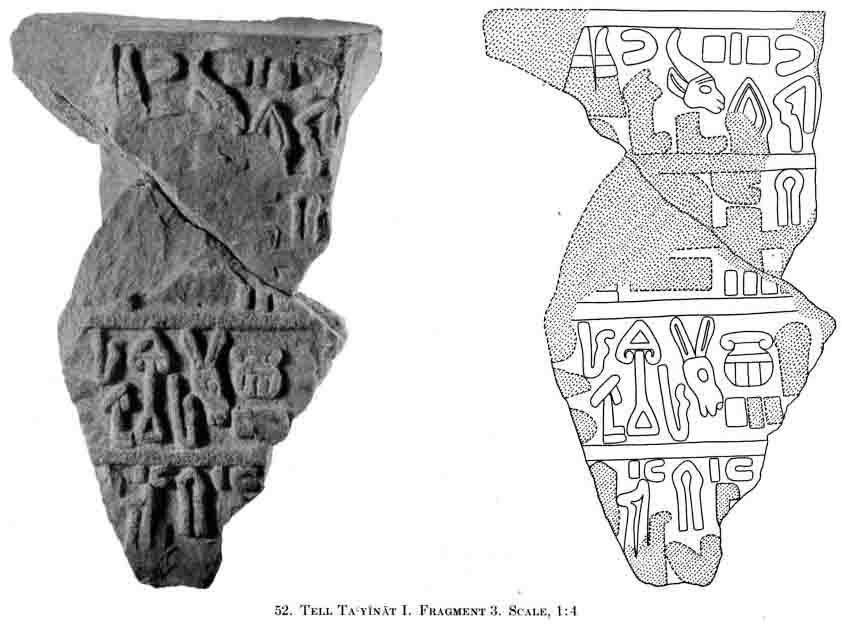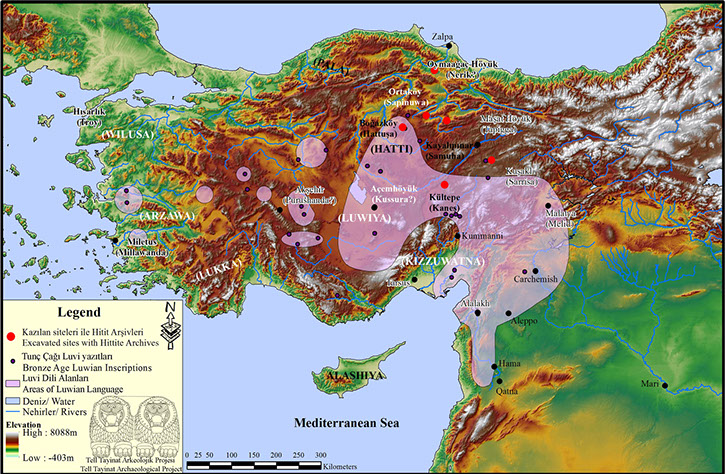
The Hittite Empire encompassed much of Anatolia and northern Syria during the Late Bronze Age (ca 1600-1200 BCE), but apart from a few references to "the Hatti" in the Bible, it was largely lost to historians until its re-discovery during the modern era. The first elements of "Hittite" civilization identified by W. Wright in 1874, were hieroglyphic inscriptions in northern Syria (Hama), although at the time this was the result of guesswork as no one could read the texts at the time. The process of decipherment is still ongoing, but we now know much more about these monuments. The Anatolian Hieroglyphic script was developed for use on monumental inscriptions and personal seals during the Bronze Age by the Hittites, but the vast majority of the monuments such as those from Hama and Tell Tayinat date to the Iron Age.
Major steps in the slow process of the decipherment of the Anatolian Hieroglyphic script came from isolated digraphic cuneiform/hieroglyphic seals, although these were frequently more of a hindrance than a help as they are often difficult to interpret, and then in the wake of the decipherment and identification of the language of the Late Bronze Age cuneiform documents from Boğazköy as Hittite. The discovery of a large Phoenician/Hieroglyphic bilingual inscription at Karatepe in the Adana region just after the second world war was another major source of progress, but it was not until 1973 that the language behind the hieroglyphs was definitively established as Luwian, a language closely related to Hittite, this time on the basis of readings of signs won from hieroglyphic writings of Urartian capacity measures on potsherds from Altıntepe.
The inscriptions from Tell Tayinat in the Anatolian Hieroglyphic script are of particular importance, but are thus far quite fragmentary. Tell Tayinat is likely to have been the capital of a reasonably large kingdom in the Early Iron Age, known from contemporary Assyrian inscriptions as Patin. Progress in reading particular hieroglyphic signs over the last 10 years, combined with a recent discovery of a writing of the name from Tell Tayinat itself, has led to the recognition that the native name for this kingdom was probably Pal(a)stin (as preserved in an inscription of a king Taita from Aleppo) or Wal(a)stin (as preserved in the inscriptions from Tell Tayinat as well as Meharde and Sheizar of another king Taita further south on the Orontes, as well as in the two stelae from Arsuz in the area of the bay of Iskenderun to the north, which belong to a king Suppiluliuma). Possibly the pronunciation of the kingdom's name was something like Falstin.
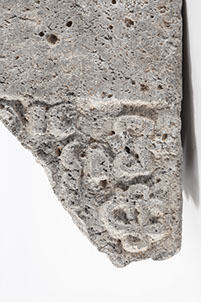
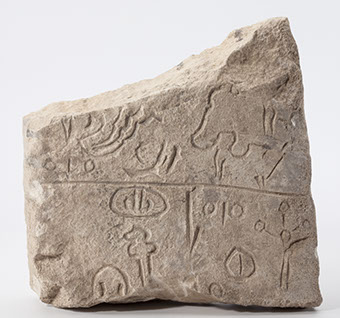
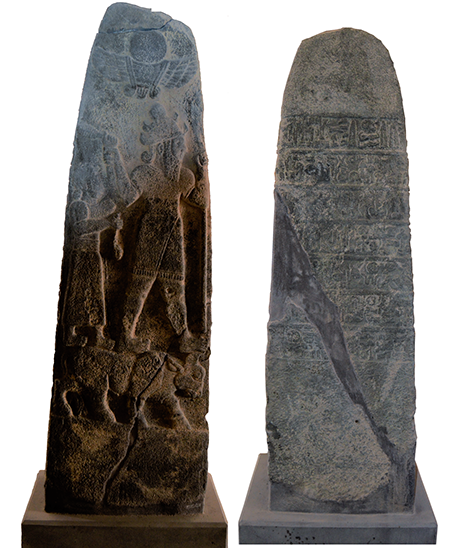
Tell Tayinat 1 is the earliest inscription from the site, probably dating
to the 10th century BCE on the basis of comparisons with the style and
spelling conventions of the inscriptions of the Suhi-Katuwa period in
Karkamish, and may be associated with a king Halparuntiya, although the fragmentary piece containing his name is not securely joined to the
inscription. Tell Tayinat 2 looks very different and uses spelling conventions that only seem to take hold in the mid-9th century BCE and does not have a king's name associated with it. Tell Tayinat 4 is the newly
discovered statue of another king Suppiluliuma, different to the one known from the Arsuz stelae referred to above, who may be dated to the beginning of the 9th century BCE. There are also numerous fragments of Hieroglyphic inscriptions both from the University of Chicago excavations (1935-38, and from the recent University of Toronto excavations. These are very difficult to join together, but appear contain pieces of at least three further different large-scale inscriptions. Hopefully further excavation will help to fill the gaps.
